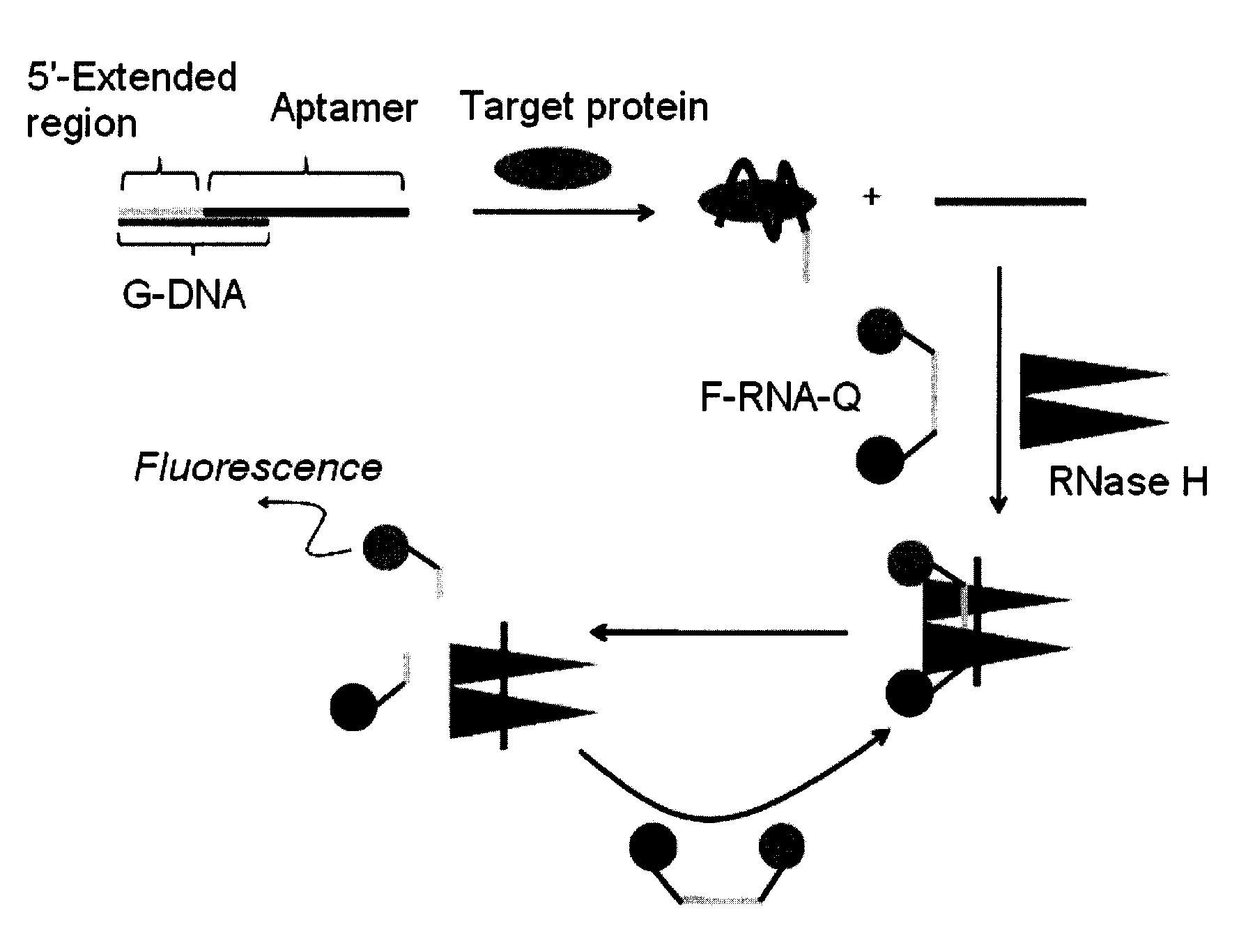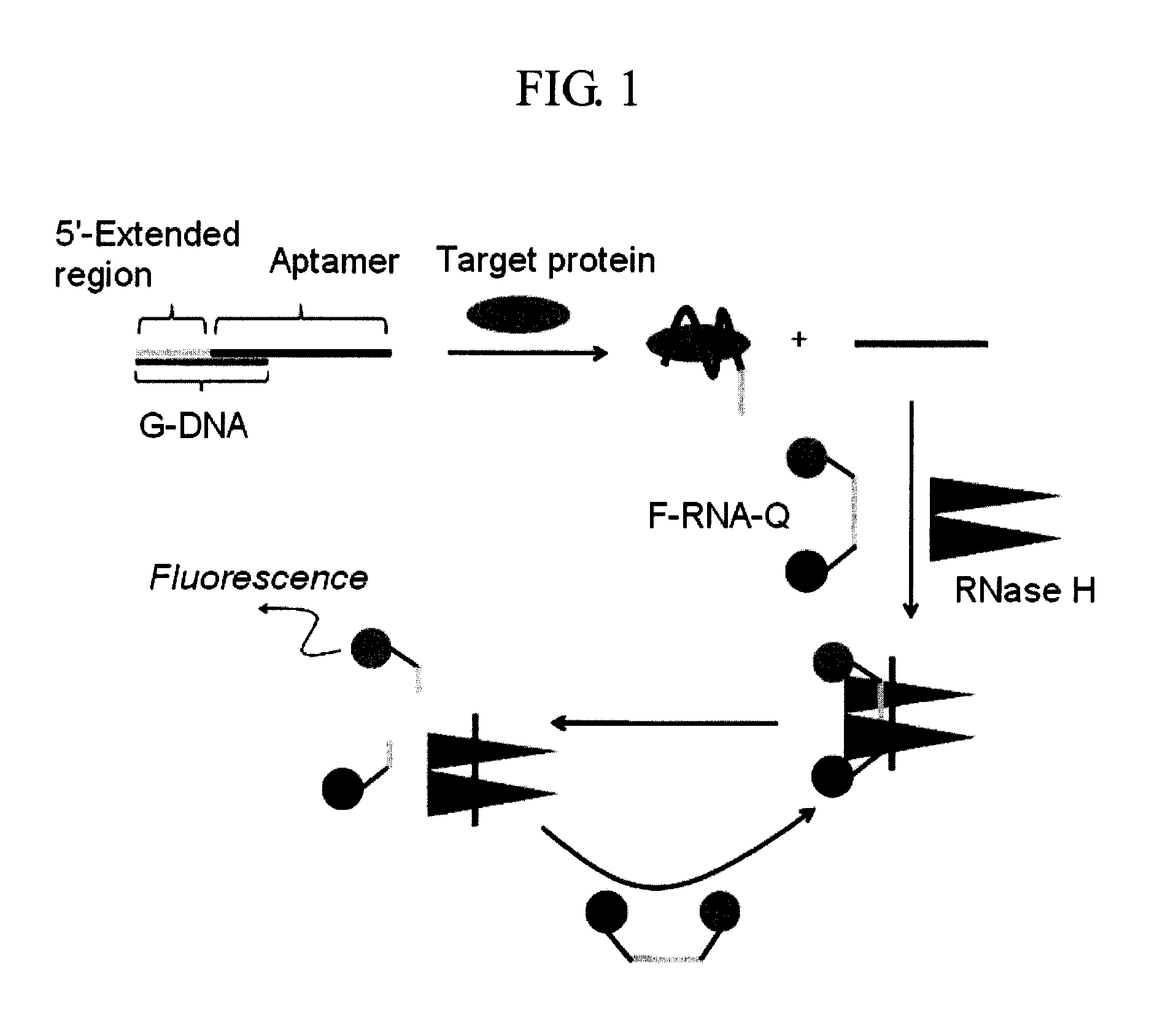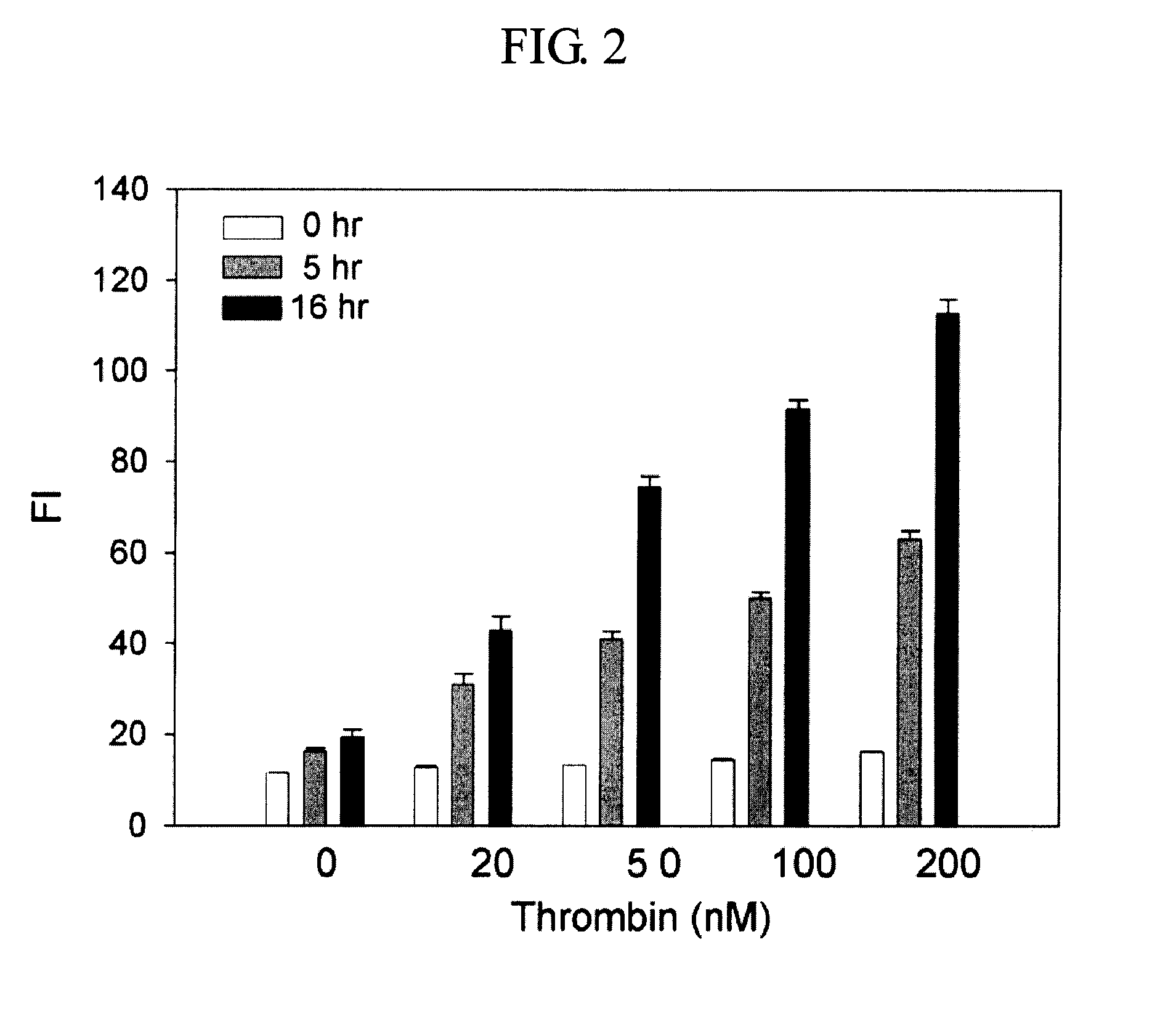Method and kit for detecting a target protein using a DNA aptamer
a technology of dna aptamer and target protein, which is applied in the field of methods and kits for detecting target proteins using dna aptamer, can solve the problem of tedious multi-step procedures of assays
- Summary
- Abstract
- Description
- Claims
- Application Information
AI Technical Summary
Benefits of technology
Problems solved by technology
Method used
Image
Examples
example 1
Amplification of a Detection Signal of α-Thrombin Using RNase H and an α-Thrombin Aptamer
[0034]The thrombin aptamer (50 μL, 1 μM) having the nucleotide sequence of SEQ ID NO: 1 was mixed with G-DNA (50 μL, 1 μM) having the nucleotide sequence of SEQ ID NO: 2, followed by addition of RNase H reaction buffer (10×; 50 μL, 500 mM Tris-HCI, pH 8.3, 750 mM KCl, 30 mM MgCl2, and 100 mM dithiothreitol) and RNase-free water (285 μL). The DNA mixture was then heated to 70° C. for 5 min, and slowly cooled down to room temperature to form the duplex. Human α-thrombin (10 μL, final concentration varied: 0, 20, 50, 100 and 200 nM) was added to the preannealed duplex, and the mixture was incubated at 25° C. for 30 min. After addition of F-RNA-Q (50 μL, 1 μm; BIONEER, Korea), which comprises RNA having the nucleotide sequence of SEQ ID NO: 3, labeled with fluorescein and dabcyl, at its 5′- and 3′-ends, respectively, the solutions were incubated with or without RNase H (5 μL, 2.5 unit, New England B...
example 2
Selectivity for amplification of a Detection Signal of α-Thrombin Using RNase H and α-Thrombin Aptamer
[0036]For specificity assessments, the procedure of Example 1 was repeated. BSA, human α-, β-, or γ-thrombin (50 μL, 1 μM) were added to the preannealed DNA duplex. After addition of F-RNA-Q (50 μL, 1 μM), the solutions were incubated with or without RNase H (5 μL, 2.5 unit, New England Biolabs, USA) for 16 hr. Then, the fluorescence intensity of each solution was determined by the method described in Example 1. Each data represents the average value of three independent experiments (FIG. 3).
[0037]As shown in FIG. 3, the aptamer selectively binds to the target protein, α-thrombin, with a very high affinity compared with other proteins. This result suggests that the present invention is useful for a selective detection of a target protein.
PUM
| Property | Measurement | Unit |
|---|---|---|
| dissociation constant | aaaaa | aaaaa |
| dissociation constant | aaaaa | aaaaa |
| pH | aaaaa | aaaaa |
Abstract
Description
Claims
Application Information
 Login to View More
Login to View More - R&D
- Intellectual Property
- Life Sciences
- Materials
- Tech Scout
- Unparalleled Data Quality
- Higher Quality Content
- 60% Fewer Hallucinations
Browse by: Latest US Patents, China's latest patents, Technical Efficacy Thesaurus, Application Domain, Technology Topic, Popular Technical Reports.
© 2025 PatSnap. All rights reserved.Legal|Privacy policy|Modern Slavery Act Transparency Statement|Sitemap|About US| Contact US: help@patsnap.com



